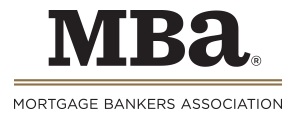WASHINGTON, D.C. /strong> – (RealEstateRama) – Commercial and multifamily mortgage delinquencies remained low in the second quarter of 2019, according to the Mortgage Bankers Association’s (MBA) latest Commercial/Multifamily Delinquency Report.
“The strong economy, low interest rates, and liquid finance markets are all contributing to delinquency rates that are at or near record lows for commercial and multifamily mortgage loans,” said Jamie Woodwell, MBA’s Vice President of Commercial Research & Economics. “Despite uncertainty on many economic fronts, it is hard to identify factors that would dramatically change the delinquency rate picture in the near term.”
MBA’s quarterly analysis looks at commercial/multifamily delinquency rates for five of the largest investor-groups: commercial banks and thrifts, commercial mortgage-backed securities (CMBS), life insurance companies, Fannie Mae and Freddie Mac. Together, these groups hold more than 80 percent of commercial/multifamily mortgage debt outstanding.
Based on the unpaid principal balance (UPB) of loans, delinquency rates for each group at the end of the second quarter were as follows:
- Banks and thrifts (90 or more days delinquent or in non-accrual): 0.46 percent, a decrease of 0.02 percentage points from the first quarter;
- Life company portfolios (60 or more days delinquent): 0.04 percent, unchanged from the first quarter;
- Fannie Mae (60 or more days delinquent): 0.05 percent, a decrease of 0.02 percentage points from the first quarter;
- Freddie Mac (60 or more days delinquent): 0.03 percent, unchanged from the first quarter; and
- CMBS (30 or more days delinquent or in REO): 2.46 percent, a decrease of 0.15 percentage points from the first quarter.
MBA’s analysis incorporates the measures used by each individual investor group to track the performance of their loans. Because each investor group tracks delinquencies in its own way, delinquency rates are not comparable from one group to another.
Construction and development loans are generally not included in the numbers presented here, but are included in many regulatory definitions of ‘commercial real estate’ despite the fact they are often backed by single-family residential development projects rather than by office buildings, apartment buildings, shopping centers, or other income-producing properties. The FDIC delinquency rates for bank and thrift held mortgages reported here do include loans backed by owner-occupied commercial properties.
Differences between the delinquencies measures are detailed in Appendix A. To view the report, please visit: https://www.mba.org/Documents/Research/2Q19CMFDelinquency.pdf.
CONTACT
Adam DeSanctis
(202) 557-2727


